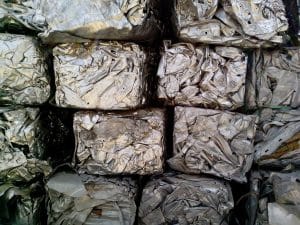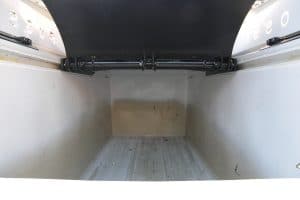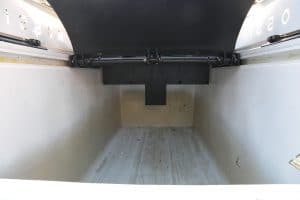Unloading difficulties. We can ask our trucks to compact waste more and more, but if we can’t unload it (because they’re stuck in) it will be useless.

Technology has helped us and the new materials allow waste to be compressed to 4:1 levels, which means that waste can be compressed to a quarter of its volume.
Everything beautiful, you can load many more waste (obviously always giving an eye to the payload, but that’s another thing), you can work more, all earned!
ARE we sure?
There is big problem… how to unload all this mass of waste?
This is what we were asked a few years ago by a cooperative that had found this “small” problem.
But let us take a step backwards.
A day in a cooperative.
We had built a truck with a very high loading and compaction capacity. The cooperative was very happy because they could load a lot, making long rostered without wasting time to unload continuously.
so we make a test. We start for a rostered to collect the cardboard.
We start and look at the truck loading cardboard and paper to more I can not.
After a half day’s work, we are happy and go to the collection centre to dump.
Once in the landfill, however, here is the surprise.
The body rises up but, besides two or three cardboard boxes, the waste remains everything inside the body.
How is that possible? Well, very simple. The waste was too pressed and was stuck inside the body.
Many will say, but by now all the new compactors have the reverse blade cycle. basically, the blade, in addition to move the waste towards the bottom of the body, can also go round the opposite way and help to get out of the waste.
Of course, but if the waste is so compact, this solution is almost useless.
(It’s not easy to explain in words, but I promise that I’ll shortly make a video explanation…)
Okay, let’s go back to that. Where were we?
Ah yes, we are all stopped to look a 10 cubic meter truck with the body raised to 90°, from which not even a sheet of paper comes out.
We looked like firs.
The only way was to go with forks to move the mass of waste.
A VARY DANGEROUS THING!
So with the tail between our legs we return home. We were wrong and had to find the solution.
We sit down at the table, even with the cooperative’s technicians. We like to have a dialogue with our customers. It is you who give us the impetus to always find new solutions.
In fact, here is the flash of genius. A second blade in the part behind the carriage, on the opposite side of the compaction blade.
In the resting phase, it is parallel to the body and does not interfere with the waste. When it is necessary to discharge, the blade descends and pushes the mass of waste out of the body.
Exactly like the ejector plate in the larger compactors. But with all the advantages of body compactors.
We are immediately working on the project and, in no time, we are going out with this revolutionary system. Easy – Empty.

Ejecting blade at rest (in line with the compactor carriage)

Blade working (ready to push the waste away)
The cooperative was very happy, because now they could not only load so much and work harder, but they could also discharge everything quickly and safely.
it might sound trivial. Yet it is from these ideas, apparently trivial, that all the small revolutions start.
This system is now set up on all our 7 and 10 m3 Body compactors. Our flagship flowers in terms of functionality and efficiency.
R200 and R300
https://youtu.be/jNVX56j9Hwc
If you want information about this system, call us at 0541 600320.
Don’t forget to leave your email here below to stay informed about waste collection vehicles.
See you next time
Let’s Rock
Andrea
